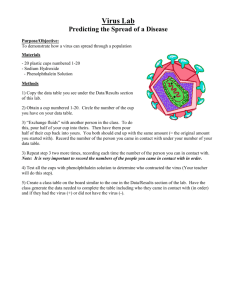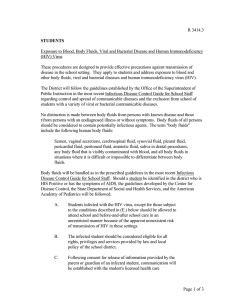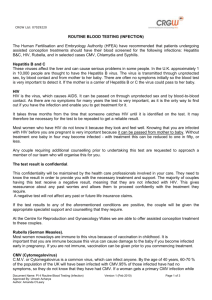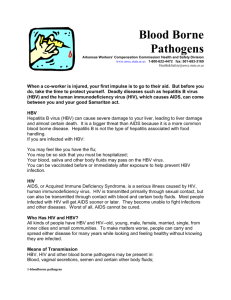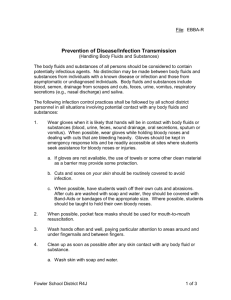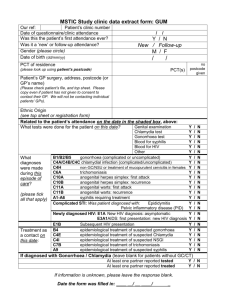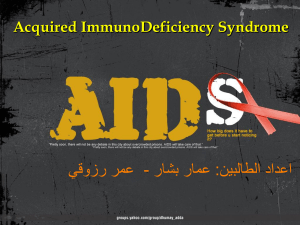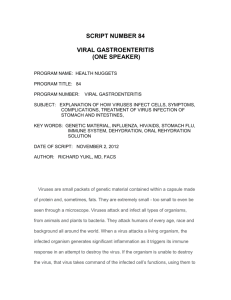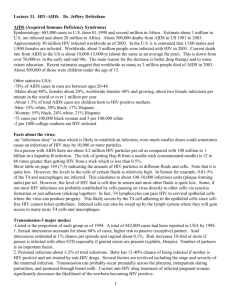Patient Zero - Biology Junction
advertisement
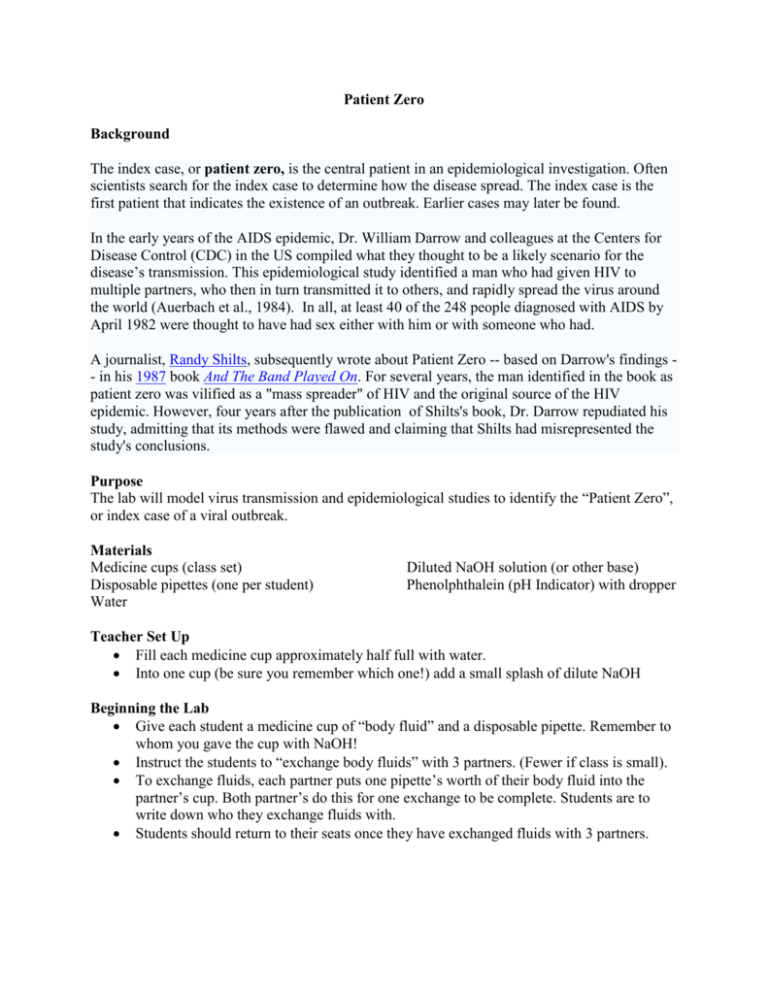
Patient Zero Background The index case, or patient zero, is the central patient in an epidemiological investigation. Often scientists search for the index case to determine how the disease spread. The index case is the first patient that indicates the existence of an outbreak. Earlier cases may later be found. In the early years of the AIDS epidemic, Dr. William Darrow and colleagues at the Centers for Disease Control (CDC) in the US compiled what they thought to be a likely scenario for the disease’s transmission. This epidemiological study identified a man who had given HIV to multiple partners, who then in turn transmitted it to others, and rapidly spread the virus around the world (Auerbach et al., 1984). In all, at least 40 of the 248 people diagnosed with AIDS by April 1982 were thought to have had sex either with him or with someone who had. A journalist, Randy Shilts, subsequently wrote about Patient Zero -- based on Darrow's findings - in his 1987 book And The Band Played On. For several years, the man identified in the book as patient zero was vilified as a "mass spreader" of HIV and the original source of the HIV epidemic. However, four years after the publication of Shilts's book, Dr. Darrow repudiated his study, admitting that its methods were flawed and claiming that Shilts had misrepresented the study's conclusions. Purpose The lab will model virus transmission and epidemiological studies to identify the “Patient Zero”, or index case of a viral outbreak. Materials Medicine cups (class set) Disposable pipettes (one per student) Water Diluted NaOH solution (or other base) Phenolphthalein (pH Indicator) with dropper Teacher Set Up Fill each medicine cup approximately half full with water. Into one cup (be sure you remember which one!) add a small splash of dilute NaOH Beginning the Lab Give each student a medicine cup of “body fluid” and a disposable pipette. Remember to whom you gave the cup with NaOH! Instruct the students to “exchange body fluids” with 3 partners. (Fewer if class is small). To exchange fluids, each partner puts one pipette’s worth of their body fluid into the partner’s cup. Both partner’s do this for one exchange to be complete. Students are to write down who they exchange fluids with. Students should return to their seats once they have exchanged fluids with 3 partners. Modeling HIV Testing The teacher must take a dropper bottle of phenolphthalein around to each student and drop one drop of the pH indicator into the student’s measuring cup. If the student was infected with the virus, their “body fluids” will turn bright pink. Modeling the Epidemiological Study Have the students who were infected by the virus (pink cups) stand. They are to remain silent during the epidemiological study, unless asked specific questions by the epidemiologists. Have 2 students who did NOT get the virus volunteer to be the epidemiologists and try to figure out who was the Patient Zero, or index case, of this outbreak. HINT: Let the students try to figure it out on their own first—they will probably start asking those with the virus who they exchanged fluid with in a rather disorderly fashion. If they struggle, help them see that if an infected individual exchanged fluids with someone who is seated (not infected) that person could NOT have been Patient Zero. In the past, my classes have been able to narrow it down to 1 or 2 possible Patient Zeros. I inevitably tell them who the Patient Zero was if they cannot figure it out. This is, of course, very simplified. HIV is more difficult to work with in the real world due to the multiple modes of transmission, window period, etc.
